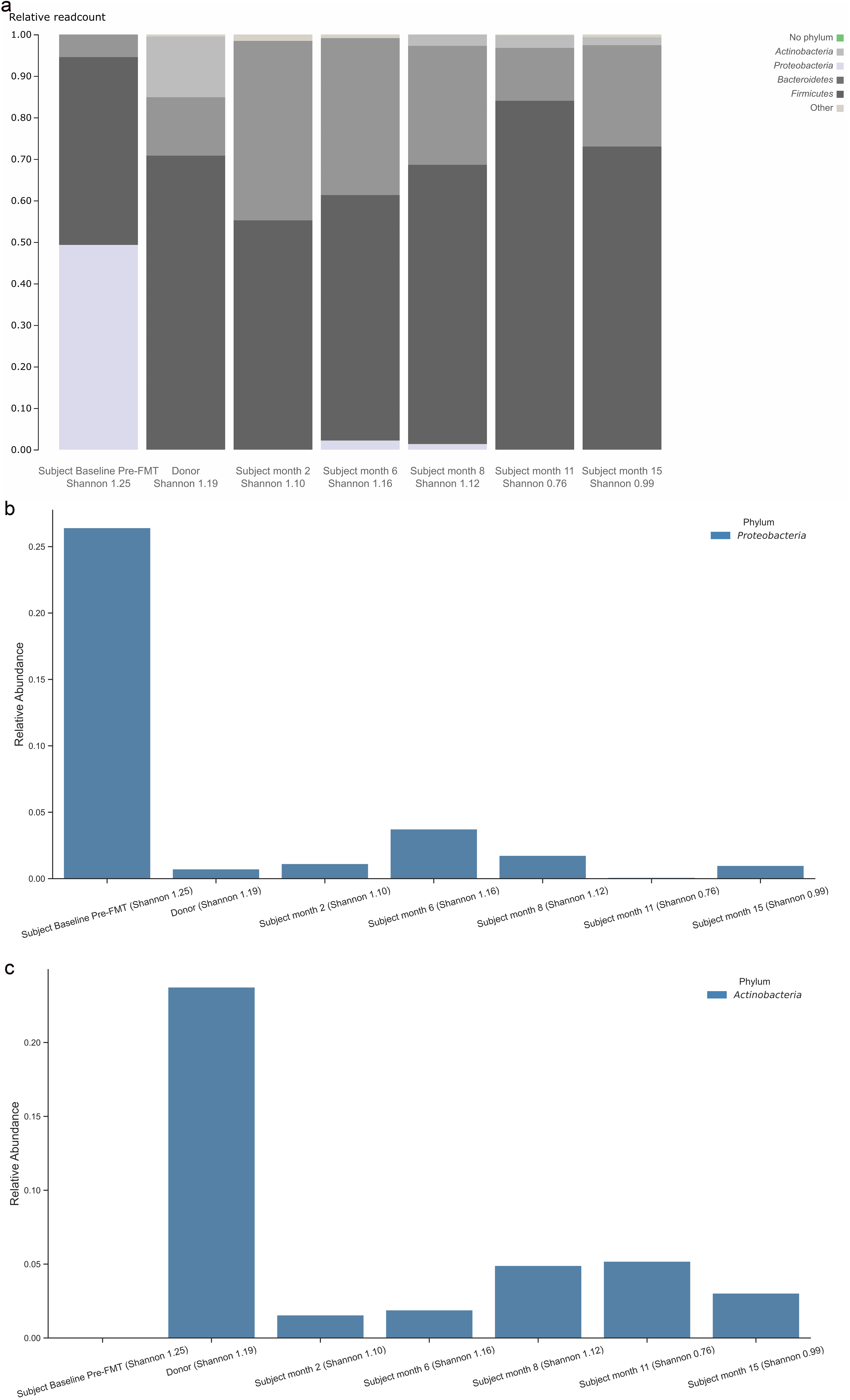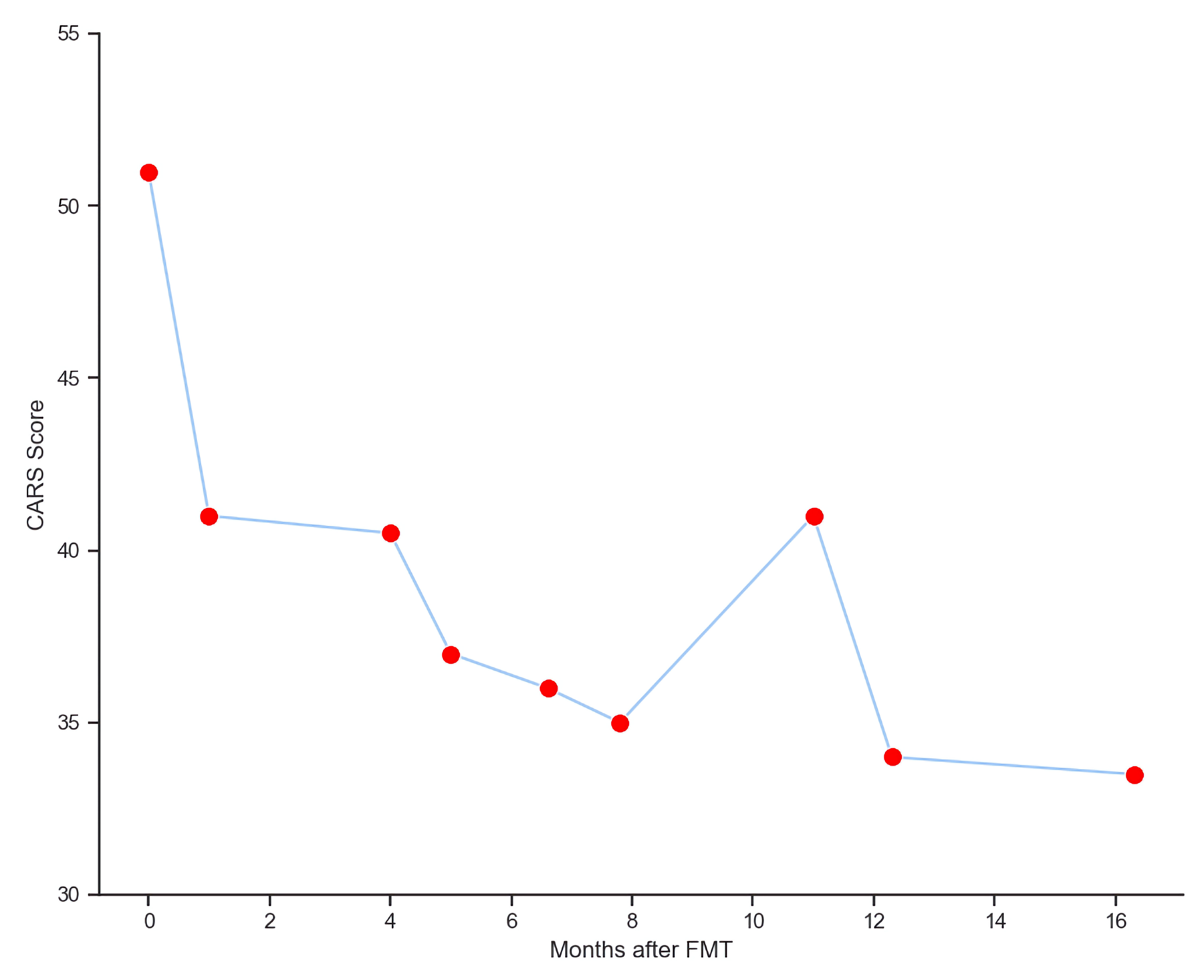
Figure 1. Gut microbiome profile in species level for the patient and donor (a). Species Lactobacillus animalis relative abundance in donor and subject (b). FMT: fecal microbiota transplant.
| Journal of Medical Cases, ISSN 1923-4155 print, 1923-4163 online, Open Access |
| Article copyright, the authors; Journal compilation copyright, J Med Cases and Elmer Press Inc |
| Journal website https://www.journalmc.org |
Case Report
Volume 15, Number 4-5, May 2024, pages 82-91
Improvements in Gut Microbiome Composition and Clinical Symptoms Following Familial Fecal Microbiota Transplantation in a Nineteen-Year-Old Adolescent With Severe Autism
Figures





Table
| Timepoint | Shannon index (patient) | Shannon index (donor) |
|---|---|---|
| FMT: fecal microbiota transplant. | ||
| Baseline | 2.2 | 6.7 |
| Month 2 post-FMT | 5.1 | - |
| Month 6 post-FMT | 6.0 | - |
| Month 8 post-FMT | 6.2 | - |
| Month 11 post-FMT | 5.9 | - |
| Month 15 post-FMT | 6.5 | - |